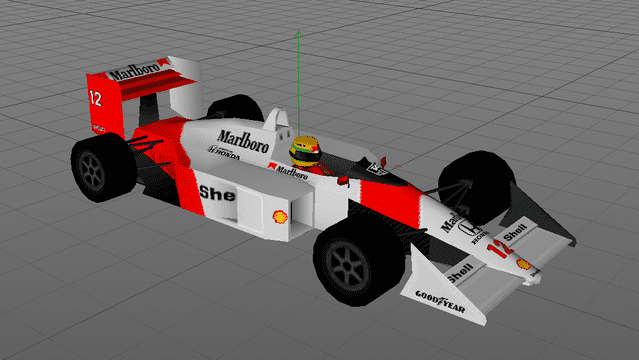somebody working on a more practical CDO editor?
I think I've got a pretty interesting contribution on this front after tinkering with it for a few weeks. Having dived pretty deeply into the file format, I think I unearthed how the normals and indices work.
For the record, the extraction tool can also help with documentation - I compiled and tried it, but I couldn't seem to ever understand it considering the JS based viewer relies on models being extracted from your tool.Yeah, it was a lot of staring at hex, and it not making sense, then a lot of staring at 4-bit chunks, and it not making sense, then randomly dividing one of the columns by 2 and some almost-reasonable numbers popping out, then thinking where the heck are the high bits stashed, then holy %#$ it's there, just really weirdly misaligned (and 9-bit!)
Along the way I ended up taking one of the smallest LODs and *manually assigning the normal indices* so I could know what numbers I'm actually looking for in the face data. I got it about 90% right on the first try, which I'm pretty proud of.
The only things I don't have a handle on in the model/lod format is the meaning of the uint16 between uv1 and uv2 of the textured face, and what the values between num_quads and num_tex_tris are, but those have all been zero in the models I've checked. All the normals and face flags and stuff are reasonably well mapped out now.
As for the actual cdo format, I clearly don't have scale completely right, and there's some unknown bytes between "num_lods" and the lod data, as well as a whole load of things at the end of the file.
I'm thinking about trying my hand at an OBJ -> cdo/cdp converter.
Let me know what you think of the normals if you have a chance to use the tool. Blender can open the models mostly correctly, but Meshlab is hopeless.
I compiled and tried it, but I couldn't seem to ever understand it considering the JS based viewer relies on models being extracted from your tool.
Model needs a lot of work, but looks interesting.
I remember someone mentioning (might've been pez himself, actually) bringing back the S14 Silvia LM Edition from GT1 to GT2+, whenever possible. I guess that might be possible soon.
So it's just in testing phase? Yeah, I saw that the model doesn't have any reflections, but the window has more transparency than the opponents, for example
EDIT: When someone figures out the reflection system, will be possible to add cars the soft top Elise and the Audi A4 Avant (as prize cars, at least)?
Yeah, I saw that the model doesn't have any reflections

I wondering if possible to mod the BGM from one game one to another.
The track lengths in GT2 are hardcoded, so the music can only be replaced with music of exactly the same length. This means that the music can't be swapped between regions.
If it's the same length then it would work. It's possible (although unlikely) that you might find radio edits of the songs that would fit the length, or make your own edits of them, but it's probably not worth the hassle for something that couldn't be feasibly released - uploading a copy of a licenced song with your mod is quite a strong no-no.thanks for the answer.
what a pity, but hypothetically, there is a way to extract, edit the length and then inject back the BGM of the game?
If it's the same length then it would work. It's possible (although unlikely) that you might find radio edits of the songs that would fit the length, or make your own edits of them, but it's probably not worth the hassle for something that couldn't be feasibly released - uploading a copy of a licenced song with your mod is quite a strong no-no.

Our first custom car model is here (proof of concept):



I've made this McLaren for testing purposes and fun for all of you
I tried to keep the polycount relatively low and style somewhat close to the GT2 (altrough still far from it) and standard texture size. If this goes right, it might be even able to run on the original hardware!
Well, that's actually exactly what I wanted to hearThat's way too high detail I'm afraid - there's a limit of 255 vertices (your car body seems to use 800+), the full texture must fit on a 256x224 sheet (yours is 256x256), and there's a limit of 16 colours per face (your wheels alone seem to use 70+). These aren't performance limits, these are limits to the amount of data that will actually fit into the game file formats, so not possible to bypass.

